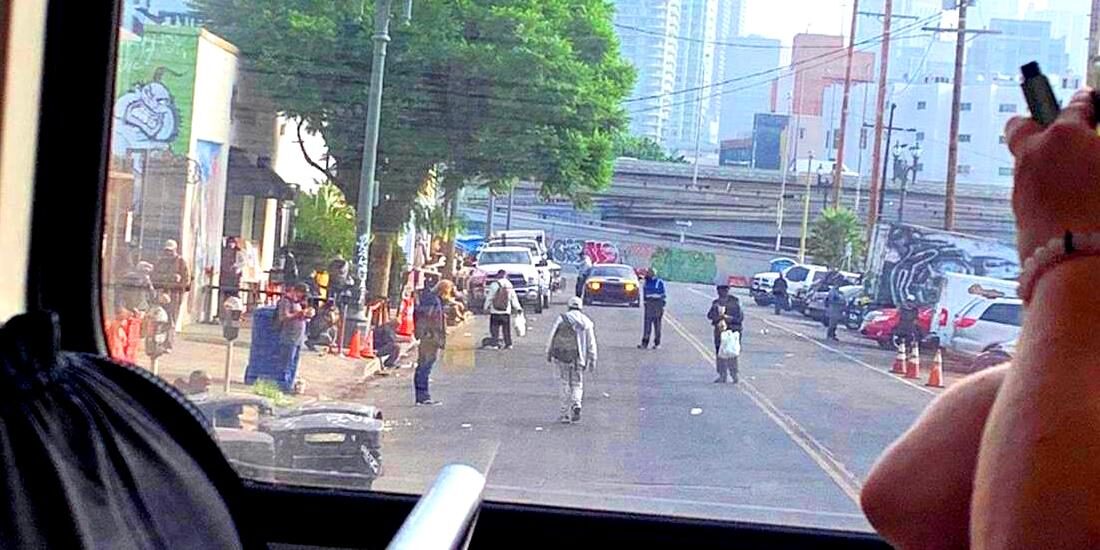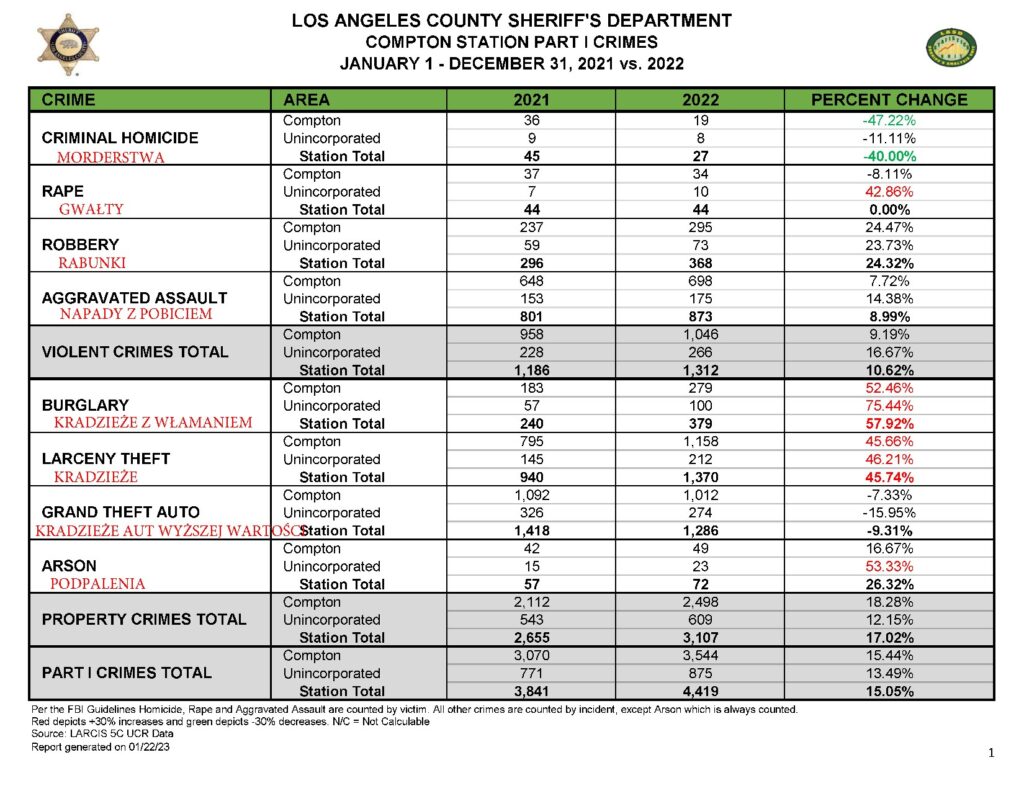- 6 March 2023
- Posted by: andrzej.sztando
- Category: Traveling in search of local development and inspirations for local & regional governments

I stayed in Compton for a week. It has 95k inhabitants and is part of the Los Angeles metropolitan area. It has industry, but is known for crime and rap. According to the FBI, in 2010 it was the 8th most dangerous city in the USA. Look at the table: in 2022, on average, there was a murder every 2 weeks, a rape every week, a robbery every day, and aggravated assault several times a day. There are thousands of thefts. These are only crimes reported to the police. In fact, there are more. There are 37 gangs here, including 2 most famous ones, and in 2018 they had about 3,800 inhabitants.Have I walked the streets? A bit, yes, and I’m alive, but what I have experienced is mine. You can walk during the day, but you have to be careful where you walk, what you wear, what you photograph, and even who and how you look at. Night walking means trouble. The city train rides were also exciting. It happened that I had to get off at a random station…
I did not dare to get on the city bus. Anyone who has even a little money drives a car everywhere. The car means some more safety. High fences, barbed wire, bars, cameras, etc. also give it a bit, so it’s a common view. Anyway, see how it is there – the net is full of videos, e.g. https://youtu.be/pNXnrZvqHHwOf course, I studied the city’s development strategy. It contains a lot of ideas for safety, including innovative ones. E.g. in 2004-2009, the project “Gifts for Guns” was implemented. Residents could anonymously exchange firearm for vouchers, which could be used to buy food, household chemicals, etc. About 7,000 (seven thousand) pistols, shotguns and rifles were delivered, including automatic ones, and even grenades. Did it help? A bit, yes, but a bit. I was told that surrendered old weapons, people replaced with new ones – so, replacement of *equipment* partly at the taxpayer’s expense. Supporting the Police also helped a little: additional stations, patrols, cars, equipment, etc.
The effectiveness of so-called soft projects: educational, preventive, etc., is difficult to assess. It is not known what exactly would have happened without them. However, it can be assumed that it would be worse, so it is good that they were implemented. However, no matter what the local authorities come up with, what strategy they adopt towards crime, they will not solve the problem alone. Its sources are systemic, located outside the city and result from the development model adopted by the US, which – in addition to these and other weaknesses – gives them breakthrough innovation, economic and military power, and consequently global competitiveness.
Lesson? Safety does not come so much from the number of policemen, their equipment, cameras, locks, barbed wire, etc., as from such a socio-economic system that gives all people many chances for a prosperous life from legal sources, motivates them to such life, prevents non-culpable poverty and pathologies, and cuts off the legal, financial, technical and cultural roots of crime. It is a system that does not have to treat much, because some diseases have nothing to infect, and it effectively prevents others. Easier said than done, especially if you want to overtake others in growth and development, but it is possible. Let us remember this when planning the development of our communes and the whole countries.

